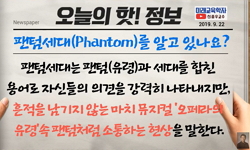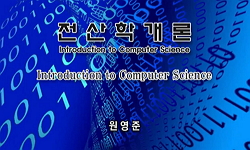Objective: We wanted to evaluate the impact of two reconstruction algorithms (halfscan and multisector) on the image quality and the accuracy of measuring the severity of coronary stenoses by using a pulsating cardiac phantom with different heart rate...
http://chineseinput.net/에서 pinyin(병음)방식으로 중국어를 변환할 수 있습니다.
변환된 중국어를 복사하여 사용하시면 됩니다.
- 中文 을 입력하시려면 zhongwen을 입력하시고 space를누르시면됩니다.
- 北京 을 입력하시려면 beijing을 입력하시고 space를 누르시면 됩니다.



The Influence of Reconstruction Algorithm and Heart Rate on Coronary Artery Image Quality and Stenosis Detection at 64-Detector Cardiac CT
한글로보기https://www.riss.kr/link?id=A104533949
-
저자
Yi-Ting Wang (National Taiwan University Hospital) ; Chung-Yi Yang (National Taiwan University Hospital) ; Jong-Kai Hsiao (National Taiwan University Hospital) ; Hon-Man Liu (National Taiwan University Hospital) ; Wen-Jen Lee (National Taiwan University Hospital) ; Yun Shen (GE Yokogawa Medical Systems)
- 발행기관
- 학술지명
- 권호사항
-
발행연도
2009
-
작성언어
English
- 주제어
-
등재정보
KCI등재,SCIE,SCOPUS
-
자료형태
학술저널
-
수록면
227-234(8쪽)
-
KCI 피인용횟수
6
- 제공처
-
0
상세조회 -
0
다운로드
부가정보
다국어 초록 (Multilingual Abstract)
Objective: We wanted to evaluate the impact of two reconstruction algorithms (halfscan and multisector) on the image quality and the accuracy of measuring the severity of coronary stenoses by using a pulsating cardiac phantom with different heart rates (HRs).
Materials and Methods: Simulated coronary arteries with different stenotic severities (25, 50, 75%) and different luminal diameters (3, 4, 5 mm) were scanned with a fixed pitch of 0.16 and a 0.35 second gantry rotation time on a 64-slice multidetector CT. Both reconstruction algorithms (halfscan and multisector) were applied to HRs of 40-120 beats per minute (bpm) at 10 bpm intervals. Three experienced radiologists visually assessed the image quality and they manually measured the stenotic severity.
Results: Fewer measurement errors occurred with multisector reconstruction (p = 0.05), a slower HR (p < 0.001) and a larger luminal diameter (p = 0.014); measurement errors were not related with the observers or the stenotic severity. There was no significant difference in measurements as for the reconstruction algorithms below an HR of 70 bpm. More nonassessable segments were visualized with halfscan reconstruction (p = 0.004) and higher HRs (p < 0.001). Halfscan reconstruction had better quality scores when the HR was below 60 bpm, while multisector reconstruction had better quality scores when the HR was above 90 bpm. For the HRs between 60 and 90 bpm, both reconstruction modes had similar quality scores. With excluding the nonassessable segments, both reconstruction algorithms achieved a similar mean measured stenotic severity and similar standard deviations.
Conclusion: At a higher HR (above 90 bpm), multisector reconstruction had better temporal resolution, fewer nonassessable segments, better quality scores and better accuracy of measuring the stenotic severity in this phantom study.
다국어 초록 (Multilingual Abstract)
Objective: We wanted to evaluate the impact of two reconstruction algorithms (halfscan and multisector) on the image quality and the accuracy of measuring the severity of coronary stenoses by using a pulsating cardiac phantom with different heart rate...
Objective: We wanted to evaluate the impact of two reconstruction algorithms (halfscan and multisector) on the image quality and the accuracy of measuring the severity of coronary stenoses by using a pulsating cardiac phantom with different heart rates (HRs).
Materials and Methods: Simulated coronary arteries with different stenotic severities (25, 50, 75%) and different luminal diameters (3, 4, 5 mm) were scanned with a fixed pitch of 0.16 and a 0.35 second gantry rotation time on a 64-slice multidetector CT. Both reconstruction algorithms (halfscan and multisector) were applied to HRs of 40-120 beats per minute (bpm) at 10 bpm intervals. Three experienced radiologists visually assessed the image quality and they manually measured the stenotic severity.
Results: Fewer measurement errors occurred with multisector reconstruction (p = 0.05), a slower HR (p < 0.001) and a larger luminal diameter (p = 0.014); measurement errors were not related with the observers or the stenotic severity. There was no significant difference in measurements as for the reconstruction algorithms below an HR of 70 bpm. More nonassessable segments were visualized with halfscan reconstruction (p = 0.004) and higher HRs (p < 0.001). Halfscan reconstruction had better quality scores when the HR was below 60 bpm, while multisector reconstruction had better quality scores when the HR was above 90 bpm. For the HRs between 60 and 90 bpm, both reconstruction modes had similar quality scores. With excluding the nonassessable segments, both reconstruction algorithms achieved a similar mean measured stenotic severity and similar standard deviations.
Conclusion: At a higher HR (above 90 bpm), multisector reconstruction had better temporal resolution, fewer nonassessable segments, better quality scores and better accuracy of measuring the stenotic severity in this phantom study.
참고문헌 (Reference)
1 Nieman K, "Reliable noninvasive coronary angiography with fast submillimeter multislice spiral computed tomography" 106 : 2051-2054, 2002
2 Leber AW, "Quantification of obstructive and nonobstructive coronary lesions by 64-slice computed tomography: a comparative study with quantitative coronary angiography and intravascular ultrasound" 46 : 147-154, 2005
3 Hoffmann MH, "Noninvasive coronary angiography with 16-detector row CT: effect of heart rate" 234 : 86-97, 2005
4 Hui H, "Multislice helical CT: image temporal resolution" 19 : 384-390, 2000
5 Dewey M, "Multisegment and halfscan reconstruction of 16-slice computed tomography for detection of coronary artery stenoses" 39 : 223-229, 2004
6 Flohr TG, "Multi-detector row CT systems and imagereconstruction techniques" 235 : 756-773, 2005
7 Abada HT, "MDCT of the coronary arteries: feasibility of low-dose CT with ECG-pulsed tube current modulation to reduce radiation dose" 186 : S387-S390, 2006
8 Schroeder S, "Influence of heart rate on vessel visibility in noninvasive coronary angiography using new multislice computed tomography: experience in 94 patients" 26 : 106-111, 2002
9 Dewey M, "Influence of heart rate on diagnostic accuracy and image quality of 16-slice CT coronary angiography: comparison of multisegment and halfscan reconstruction approaches" 17 : 2829-2837, 2007
10 Lembcke A, "Imaging of the coronary arteries by means of multislice helical CT: optimization of image quality with multisegmental reconstruction and variable gantry rotation time" 175 : 780-785, 2003
1 Nieman K, "Reliable noninvasive coronary angiography with fast submillimeter multislice spiral computed tomography" 106 : 2051-2054, 2002
2 Leber AW, "Quantification of obstructive and nonobstructive coronary lesions by 64-slice computed tomography: a comparative study with quantitative coronary angiography and intravascular ultrasound" 46 : 147-154, 2005
3 Hoffmann MH, "Noninvasive coronary angiography with 16-detector row CT: effect of heart rate" 234 : 86-97, 2005
4 Hui H, "Multislice helical CT: image temporal resolution" 19 : 384-390, 2000
5 Dewey M, "Multisegment and halfscan reconstruction of 16-slice computed tomography for detection of coronary artery stenoses" 39 : 223-229, 2004
6 Flohr TG, "Multi-detector row CT systems and imagereconstruction techniques" 235 : 756-773, 2005
7 Abada HT, "MDCT of the coronary arteries: feasibility of low-dose CT with ECG-pulsed tube current modulation to reduce radiation dose" 186 : S387-S390, 2006
8 Schroeder S, "Influence of heart rate on vessel visibility in noninvasive coronary angiography using new multislice computed tomography: experience in 94 patients" 26 : 106-111, 2002
9 Dewey M, "Influence of heart rate on diagnostic accuracy and image quality of 16-slice CT coronary angiography: comparison of multisegment and halfscan reconstruction approaches" 17 : 2829-2837, 2007
10 Lembcke A, "Imaging of the coronary arteries by means of multislice helical CT: optimization of image quality with multisegmental reconstruction and variable gantry rotation time" 175 : 780-785, 2003
11 Wintersperger BJ, "Image quality, motion artifacts, and reconstruction timing of 64-slice coronary computed tomography angiography with 0.33-second rotation speed" 41 : 436-442, 2006
12 Mollet NR, "High-resolution spiral computed tomography coronary angiography in patients referred for diagnostic conventional coronary angiography" 112 : 2318-2323, 2005
13 Flohr T, "Heart rate adaptive optimization of spatial and temporal resolution for electrocardiogram-gated multislice spiral CT of the heart" 25 : 907-923, 2001
14 Begemann PG, "Evaluation of spatial and temporal resolution for ECG-gated 16-row multidetector CT using a dynamic cardiac phantom" 15 : 1015-1026, 2005
15 Kachelriess M, "Electrocardiogram-correlated image reconstruction from subsecond spiral computed tomography scans of the heart" 25 : 2417-2431, 1998
16 Desjardins B, "ECG-gated cardiac CT" 182 : 993-1010, 2004
17 Kachelriess M, "ECG-correlated image reconstruction from subsecond multi-slice spiral CT scans of the heart" 27 : 1881-1902, 2000
18 Herzog C, "Does two-segment image reconstruction at 64-section CT coronary angiography improve image quality and diagnostic accuracy?" 244 : 121-129, 2007
19 Raff GL, "Diagnostic accuracy of noninvasive coronary angiography using 64-slice spiral computed tomography" 46 : 52-557, 2005
20 Ropers D, "Detection of coronary artery stenoses with thin-slice multi-detector row spiral computed tomography and multiplanar reconstruction" 107 : 664-666, 2003
21 Funabashi N, "Coronary artery: quantitative evaluation of normal diameter determined with electron-beam CT compared with cine coronary angiography initial experience" 226 : 263-271, 2003
22 Wicky S, "Comparative study with a moving heart phantom of the impact of temporal resolution on image quality with two multidetector electrocardiography-gated computed tomography units" 27 : 392-398, 2003
23 Shechter G, "Cardiac image reconstruction on a 16-slice CT scanner using a retrospectively ECG-gated, multi-cycle 3D back-projection algorithm. in: Medical imaging 2003: image processing-proceedings, Vol 5032" Society of Photo-Optical Instrumentation Engineers 1820-1828, 2003
24 Budoff MJ, "Cardiac CT imaging: diagnosis of cardiovascular disease" Springer 1-18, 2006
25 Leschka S, "Accuracy of MSCT coronary angiography with 64-slice technology: first experience" 26 : 1482-1487, 2005
동일학술지(권/호) 다른 논문
-
Prenatal MRI Findings of Polycystic Kidney Disease Associated with Holoprosencephaly
- 대한영상의학회
- Mustafa Koplay
- 2009
- KCI등재,SCIE,SCOPUS
-
Ethanol Sclerotherapy for the Management of Craniofacial Venous Malformations: the Interim Results
- 대한영상의학회
- 이인호
- 2009
- KCI등재,SCIE,SCOPUS
-
- 대한영상의학회
- 황혜선
- 2009
- KCI등재,SCIE,SCOPUS
-
- 대한영상의학회
- 김상원
- 2009
- KCI등재,SCIE,SCOPUS
분석정보
인용정보 인용지수 설명보기
학술지 이력
| 연월일 | 이력구분 | 이력상세 | 등재구분 |
|---|---|---|---|
| 2023 | 평가예정 | 해외DB학술지평가 신청대상 (해외등재 학술지 평가) | |
| 2020-01-01 | 평가 | 등재학술지 유지 (해외등재 학술지 평가) |  |
| 2016-11-15 | 학회명변경 | 영문명 : The Korean Radiological Society -> The Korean Society of Radiology |  |
| 2010-01-01 | 평가 | 등재학술지 유지 (등재유지) |  |
| 2007-01-01 | 평가 | 등재학술지 선정 (등재후보2차) |  |
| 2006-01-01 | 평가 | 등재후보 1차 PASS (등재후보1차) |  |
| 2003-01-01 | 평가 | 등재후보학술지 선정 (신규평가) |  |
학술지 인용정보
| 기준연도 | WOS-KCI 통합IF(2년) | KCIF(2년) | KCIF(3년) |
|---|---|---|---|
| 2016 | 1.61 | 0.46 | 1.15 |
| KCIF(4년) | KCIF(5년) | 중심성지수(3년) | 즉시성지수 |
| 0.93 | 0.84 | 0.494 | 0.06 |




 KCI
KCI






